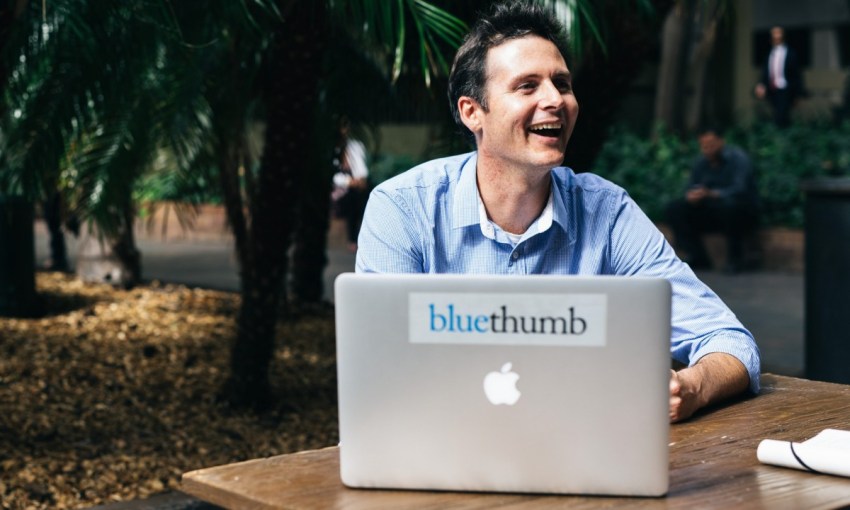Like death and taxes, immersion into the digital age is damn near inevitable. CityMag spoke with Ed Hartley of online Australian art marketplace BlueThumb to see what the digital art gallery experience is like.
Introducing virtual art gallery Bluethumb
Ed Hartley knows his audience.
As co-founder of the online art marketplace BlueThumb, he knew that there was a swathe of potential art buyers just waiting for someone to bring the gallery to their fingertips.
For more information or to browse the works available at BlueThumb, check out the website or download the app.
However, not everybody in the industry saw the opportunity the same way.
“Back then, in ’11 [when Ed and his Brother George Hartley acquired the website from its initial owners], every gallery owner laughed, like, ‘no one will ever sell art online. What are you doing? This is bullshit,’” Ed says.
“Gen X and Gen Y virtually never walk into a gallery, and even if they do, think about how many artists and how much artwork is represented by one gallery – it might be one artist exhibiting at a time.”
Choice and convenience are two problems quite easily and quite often solved with digital tools, but what BlueThumb also provides is a platform for emerging Australian artists.
“We call it a marketplace, right? So we have the power of SEO [Search Engine Optimiser] and the traffic coming through,” Ed says.
“As an artist, how do I exhibit and sell my art? …If you try to launch your own personal brand, you can have your own personal career building up your own personal brand and your own online presence, [but] how in that time can you create art?”
By using the search engine framework and artist profile feature of the BlueThumb site, Ed argues the potentially arduous process of an artist building their own site from scratch and fostering an audience there, is reduced to simply signing up and writing a bio.
And just as much as Ed is hoping to draw in emerging artists, on the other side of the transaction, it’s emerging art buyers that he hopes will try out the site, potentially to buy their first artwork of many.
“A strong component of our audience are buying for the home, you know, they love interior design, they might have just renovated, bought a place, and they’re buying art to fill a space and kind of complete their home,” Ed says.
“What we find is people buy it and have a really good experience. So as good as the visuals are on the website, when the artwork arrives it’s even better in the flesh.
“We’ve been able to exceed expectations, which means that we have a very loyal following of repeat buyers, and as they get more comfortable, they get bigger, more expensive works.”
Despite Ed wanting a chunk of the art-buying market turning to BlueThumb, he sees his platform as complimentary to the existing network of physical gallery spaces.
“I would love to collaborate with more galleries and I think they should do the same. Basically, a lot of our buyers and a lot of our artists exist outside the traditional art network, and so we’re here to bring the 99.5 per cent of artists that don’t get gallery representation into the market,” he says.
It’s hard to argue with that.








